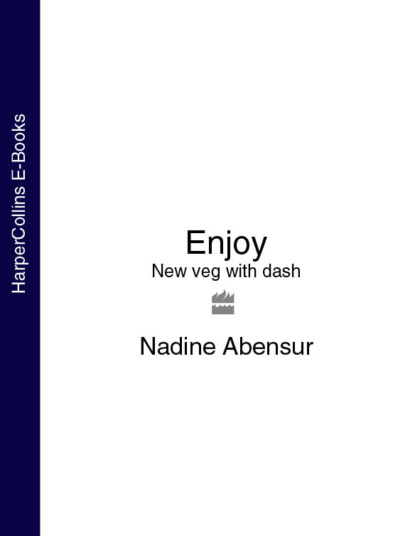По всем вопросам обращайтесь на: info@litportal.ru
(©) 2003-2024.
✖
Enjoy: New veg with dash
Настройки чтения
Размер шрифта
Высота строк
Поля
This pungent classic Moroccan sauce, conceived with grilled fish in mind, is fantastic with charred vegetables, with pilafs and couscous, on grilled bread with wilted spinach and a poached egg, or instead of pesto in a Moorish take on bruschetta, with properly charred aubergines (#u28997c83-d7af-4791-ae57-14a1714c98b6) the perfect accompaniment. Do taste as you go along when adding the lemon juice. In England I’ve used 2 whole lemons, small and somewhat devoid of juice, for this. In Australia, it must be said, as little as half an enormous Meyer lemon will do.
a large bunch of coriander, tough stalks removed, roughly chopped
a large bunch of parsley, tough stalks removed, roughly chopped
6 large garlic cloves, very finely chopped
2 tablespoons ground cumin
1 tablespoon sweet paprika
1 teaspoon harissa
1 small bird’s eye chilli, finely chopped
juice of ½–2 lemons, to taste
350ml extra virgin olive oil
sea salt
Mix all the ingredients together using a fork, so that the oil and spices make a paste loosened by the lemon juice and rough with herbs and garlic. Or pound the chopped ingredients briefly in a pestle and mortar and then stir in the remaining ingredients.
Pesto
If you are making this with rocket, you might like to replace the pine nuts with almonds or pecan nuts.
30g pine nuts
4 garlic cloves, very finely chopped
a bunch of very fresh basil or rocket (about 60g trimmed weight)
2 pinches of sea salt
a pinch of freshly ground black pepper
120ml extra virgin olive oil
40g Parmesan cheese, freshly grated
Grind the pine nuts in a food processor to a mixture of fine and coarser grits, then add the garlic. Blitz for a moment and add the basil and salt and pepper, blitzing again as you slowly pour in the olive oil to make a thick, well-flavoured pesto. Add the cheese and whiz together for a few seconds. Either use immediately or transfer to a jar, pour a protective layer of olive oil on top and seal. The pesto will keep like this in the fridge for up to a month. Use on roasted vegetables, bruschetta, in risotto and, of course, with pasta.
Harissa
Having gone through the ignominious task of making harissa with dried chillies – think surgical gloves and hour-long removal of seeds – and, worse, having imposed the torture on willing course participants, I now only ever make my harissa with fresh chillies. Quick, easy, versatile, it can be kept in the fridge to add to dressings (a basic vinaigrette is transformed by it), to stir into tagines for a final kick, to serve with couscous and roasted or charred vegetables, with poached eggs or any other type of egg for that matter, or even on its own with warm pita, olive oil and dukka.
7 large, bright-red, very fresh chillies
2 tablespoons olive oil
3–4 plump garlic cloves, roughly chopped
1 teaspoon coriander seeds
1 teaspoon caraway seeds
1 teaspoon dried mint
1 scant teaspoon ground cumin
1 teaspoon sea salt
Slit the chillies in half and remove the seeds and pith, then chop finely. Put the olive oil, garlic, coriander and caraway seeds, mint, cumin and salt in a pestle and mortar or a food processor with a herb chopping attachment and either grind to a paste or pulse several times. Briefly pound or process with the chopped chilli. Sealed in an airtight container, the harissa will keep in the fridge for at least 2 weeks.
Dukka
Traditionally dukka is served as a dip for warm pita or broken-up fried tortillas that have first been dipped briefly in olive oil. You could also add it to roasted or grilled vegetables, warm wilted spinach or a mustardy, garlicky cauliflower salad. It’s become as essential as salt and pepper on my table.
250g sesame seeds
125g coriander seeds
60g hazelnuts
60g ground cumin
sea salt
Roast the seeds, nuts and cumin separately by placing them in a dry frying pan over a low heat for a minute or two, until they are lightly browned and their aromas are released; don’t let them become too dark. Pound them together in a pestle and mortar until finely crushed but not pulverised; it should be a dry mixture rather than a paste. Season with salt to taste, then store in an airtight container until required.
Ras-al-hanout
Ras-al-hanout is a North African spice mix – traditionally the ‘grocer’s mix’ or literally ‘top of the shop’. It is a pot-luck concoction, put together for you by the merchant himself, and can contain as many as 40 different herbs and spices, hailing from the four corners of the world. It demonstrates the sensibility behind Moroccan cooking – the intricate and surprising mix of sweet and savoury, the colours, scents and aromas – and it is always applied with a delicate hand. My father often praised Moroccan cooking for its roundness of flavour. Though hot peppers are used, they rarely dominate. And I often find that, in my own cooking, I use practically immeasurable bits of this and that till I’ve obtained a taste that refers to its components in only the subtlest of ways.
3–4cm chunk of fresh ginger
8 small, tight dried rosebuds (available from Middle Eastern and Asian food shops)
5 cloves
½ small cinnamon stick
½ teaspoon ground cumin
½ teaspoon sweet paprika
4cm piece of fresh red chilli, deseeded and very finely chopped





